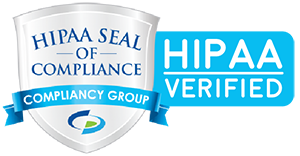Part 1: Strategic Overview and Key Considerations
1. Introduction
In the modern digital era, enterprises are
under increasing pressure to balance innovation, cost efficiency, security, and
agility. Proprietary platforms like Microsoft Office 365, Windows, and Azure
have long been industry standards. However, the growing maturity, stability,
and feature-richness of open-source solutions have made them viable—and often
superior—alternatives for a broad range of enterprise needs.
This guide—crafted for medium to large enterprises—provides a structured
approach to replacing Microsoft products with open-source equivalents. Drawing
on four decades of software architecture experience, this two-part series will
help IT leaders make confident, informed decisions, avoid common pitfalls, and
unlock long-term value.
2. The Business Case for Open Source
Advantages:
·
Cost Reduction: Elimination of
recurring licensing fees and reduced vendor lock-in costs.
·
Vendor Independence: Avoid
monopolistic pricing and roadmap lock-ins.
·
Customization: Full access to
source code enables tailored enhancements.
·
Security: Open code allows
rapid vulnerability detection, audits, and independent fixes.
·
Agility: Open-source
communities foster rapid innovation and modular architectures.
·
Ecosystem Maturity:
Enterprise-grade solutions like Red Hat, Ubuntu LTS, and OpenStack offer
stability.
Disadvantages:
·
Skill Gaps: Requires training
or hiring staff skilled in open-source tools.
·
Support Challenges: May need
third-party SLAs for critical systems.
·
Integration Complexity: Complex
hybrid environments can pose migration challenges.
·
UI/UX Resistance: Some users
may struggle with different interfaces or workflows.
3. Key Pillars of an Open Source Strategy
1.
Executive Sponsorship &
Cultural Buy-in: Secure top-level backing from CIO, CTO, and finance heads.
Foster a culture that values open standards, transparency, and innovation.
2.
Legal & Licensing
Readiness: Audit software for compliance with OSS licenses (GPL, Apache, MIT,
etc.). Establish an internal legal review process and an Open Source Program
Office (OSPO).
3.
Training & Change
Management: Develop internal champions, provide workshops, create onboarding
documentation. Ensure regular engagement and training to reduce friction.
4.
Incremental Migration: Focus on
non-critical systems first. Use a phased rollout strategy. Implement fallback
mechanisms for each stage.
5.
Support Ecosystem: Engage with
Red Hat, Canonical, SUSE, or other enterprise vendors for SLAs. Contribute back
to open-source projects to build long-term influence.
4. Open Source Alternatives to Microsoft Products
|
Microsoft Product
|
Open Source Alternative
|
Notes
|
|
Windows OS
|
Ubuntu LTS,
Fedora, Linux Mint
|
Ubuntu LTS
offers excellent hardware compatibility and enterprise support.
|
|
MS Office
|
LibreOffice, OnlyOffice
|
OnlyOffice offers better fidelity with Microsoft
formats.
|
|
Outlook
|
Thunderbird
with ExQuilla/Owl
|
Thunderbird
can integrate well with Exchange protocols.
|
|
Teams
|
Mattermost, Rocket.Chat, Jitsi
|
Mattermost is highly scalable and ideal for internal
collaboration.
|
|
SharePoint
|
Nextcloud,
Alfresco
|
Nextcloud
for file sync/share; Alfresco for advanced DMS.
|
|
SQL Server
|
PostgreSQL, MariaDB
|
PostgreSQL offers enterprise-grade features,
scalability, and tools.
|
|
Power BI
|
Metabase,
Apache Superset, Redash
|
Metabase is
intuitive and powerful for most BI needs.
|
|
Azure
|
OpenStack, Kubernetes, DigitalOcean
|
OpenStack provides infrastructure-as-a-service with
full control.
|
|
Visual Studio
|
Eclipse, VS
Code (open core)
|
VS Code is
open-source at its core and widely supported.
|
5. Planning Your Transition
6.
Assessment: Audit current
software stack, usage data, and licensing dependencies. Prioritize software
based on user base, business criticality, and ease of replacement.
7.
Pilot Projects: Select
departments like internal admin or R&D for pilot deployments. Gather user
feedback and adapt migration playbooks accordingly.
8.
Security Planning: Implement
OSS security tools: OpenVAS, OSQuery, ClamAV. Enforce strict patch management,
monitoring, and identity controls.
9.
Migration Roadmap: Create a
phased timeline with rollback procedures. Establish KPIs: cost savings,
performance benchmarks, user satisfaction.
10.
Evaluate ROI and Iterate: Use
analytics tools to measure impact. Plan for continuous improvements based on
feedback loops.
6. Risks and Mitigation Strategies
|
Risk
|
Mitigation
|
|
Lack of Support
|
Contract vendors for enterprise-grade SLAs (e.g., Red
Hat, Canonical)
|
|
Integration Complexity
|
Use APIs, open standards, and middleware like Apache Camel or WSO2
|
|
User Resistance
|
Offer UI-familiar options (OnlyOffice), run workshops,
incentivize adoption
|
|
Legal Issues
|
Form an OSPO, define an internal open-source usage policy, track
license types
|
7. Final Thoughts
Transitioning to open-source software is a
strategic move—technically, culturally, and financially. While risks exist, the
long-term benefits of freedom from vendor lock-in, cost savings, and innovation
agility can be transformative.
Done right, open-source transformation creates a resilient, future-proof IT
ecosystem.
Stay tuned for Part 2, where we’ll explore real-world success stories,
architecture patterns, migration templates, and OpenStack vs Azure Stack
comparisons.





